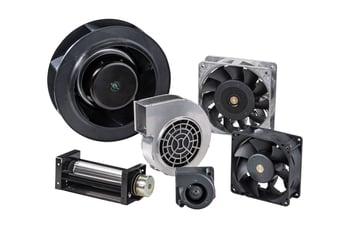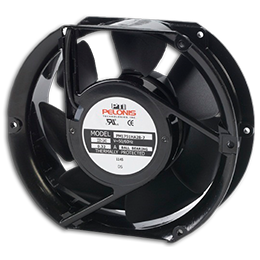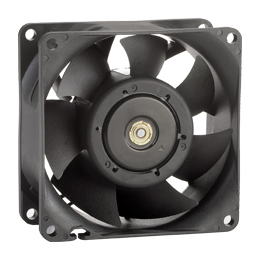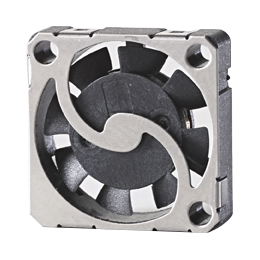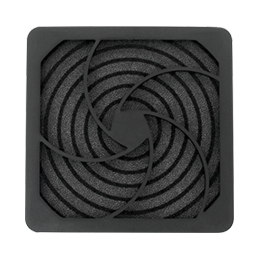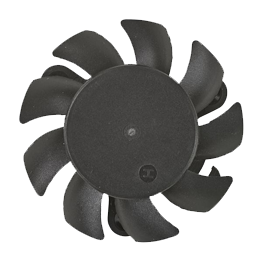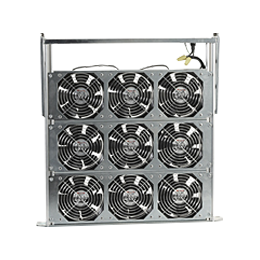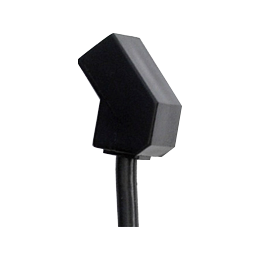How to Select the Right Cooling Fan
In many devices and systems, the buildup of heat can lead to reduced performance, prematurely deteriorated components and materials, and increased safety risks. For these reasons, many pieces of equipment utilize cooling fans to dissipate heat buildup and avoid these potentially costly consequences.
Since cooling fans are used in a wide range of products, they are available in a variety of designs and configurations to suit different application requirements and restrictions. While this broad selection makes it possible for product designers and engineers to find a component that meets their exact needs, it can also make it more challenging to find the right one. The following article serves as a helpful selection guide for readers, outlining the steps to follow when choosing a cooling fan for a particular application.
The Cooling Fan Selection Process
Step 1: Perform a Thermal Analysis
The first step in the cooling fan selection process is performing a thermal analysis. A thermal analysis determines the amount of heat generated inside a particular piece of equipment or during a particular process. The result can be used to calculate the volume of air needed to cool the device or system.
Thermal analysis operations use sensors and other instruments to determine the source(s) of heat and the amount of heat generated by each source. The heaviest consumers of power and, consequently, the biggest contributors to heat dissipation are often components like microcontrollers, processors, FPGAs, and MOSFETs. Once the necessary information is obtained, the amount of airflow required to cool the device or system can be calculated. Afterward, the cooling air path can be mapped using sensors and software to ensure that all major heat sources receive the air needed to cool them sufficiently.
Step 2: Determine the System Impedance
After the thermal analysis is performed and the required air volume is calculated, the next step in the cooling fan selection process is determining the system impedance. System impedance refers to the sum of the pressure drop experienced as air travels between the fan’s inlet vents and exhaust vents. If a system has multiple air paths, the individual impedance values are added. The value(s) can be measured for different rates of airflow with pressure sensors or by placing the system in an air chamber.
Step 3: Choose the Type of Fan
After the system impedance is identified, it can be used with the calculated airflow requirement to gauge the static pressure needed for the system. This information can then be utilized to determine which fan will serve as the best solution.
Cooling fans are divided into two categories based on the way air flows through them.
- Axial fans have air enter and exit in the same plane. Similar to an airplane propeller, they have blades that generate aerodynamic lift and pressurize the air. They can provide high airflow and are ideal for applications involving relatively low static pressure.
- Centrifugal fans have air enter in one plane and exit in another. They have rotating impellers with blades that increase the speed of air streams and convert them into pressure. They can produce high pressures and are suitable for applications involving harsh conditions (e.g., moist or dirty air streams).
Some of the factors to consider when selecting between these two fan designs are:
- Pressure
- Airflow rate
- Efficiency rate
- Space constraints
- Noise generation
- Drive configuration
- Operating temperature range
- Operating environment range
- Cost
- Delivery time
- Availability
Step 4: Final Considerations
In addition to the above, other considerations to keep in mind when choosing a cooling fan for a system include:
- Integrating speed controls: Fans that run continuously at fast speeds will wear out quickly. Integrating speed control elements that alter the speed of the fan when needed can significantly increase the overall service life of a unit.
- Incorporating performance monitoring circuits: Performance monitoring circuits track fan performance to identify potential malfunctions before they occur.
- Establishing maintenance schedules/programs: Regardless of the fan you choose, it is essential to create and implement a maintenance schedule for it. Otherwise, the unit may break down unexpectedly. A basic maintenance program should cover the following: bearings, belts and sheaves, leakage, motor condition, and system cleaning.
Quality Cooling Fans From Pelonis Technologies, Inc. (PTI)
Need additional assistance selecting a cooling fan for your application? Ask the experts at PTI! At Pelonis Technologies, Inc., we have developed and manufactured specialty cooling products for commercial and industrial operations for over 25 years. We have the knowledge and skills to answer any questions you may have and find the product that suits your exact needs. Contact us today to get started on your solution.





